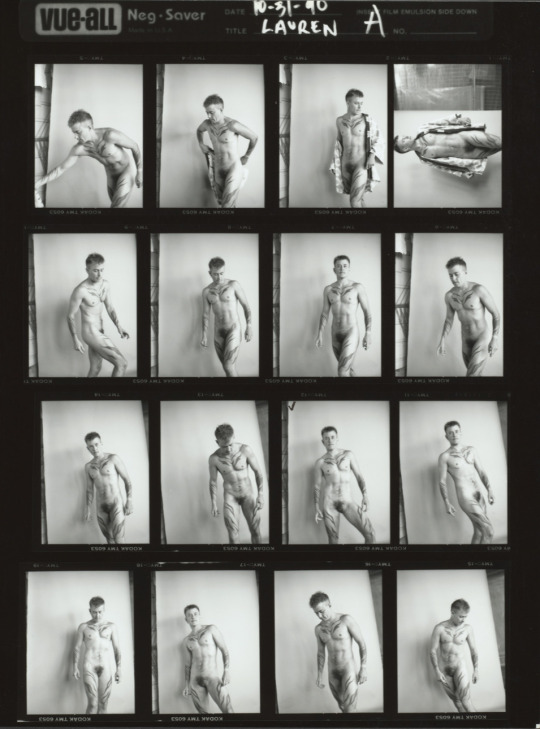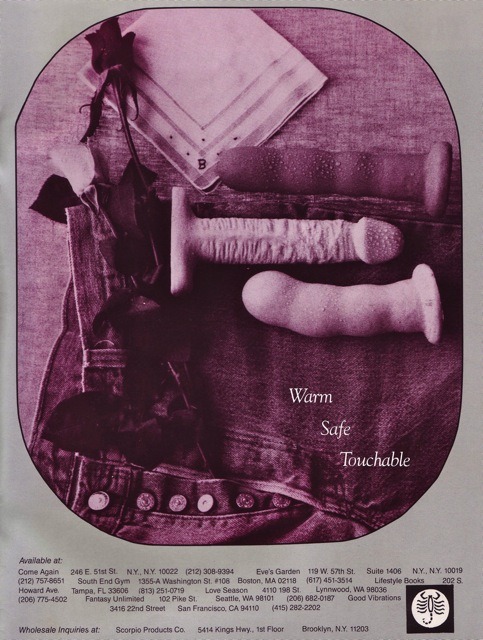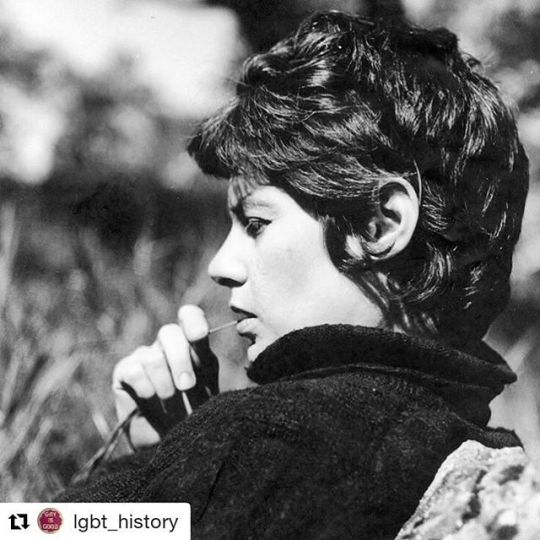#honey lee cottrell
Text


Honey Lee Cottrell, Loren Rex Cameron (1990).
Also a photographer, Cameron's work depicts the lives, portraits, and nudes of transsexual men and women. Primarily focusing on physical aspects of his own transition and that of other trans men, his photographs are known for their dynamism and illusion of movement.
3K notes
·
View notes
Text

Honey Lee Cottrell - Tee Corrine, unknown date
92 notes
·
View notes
Text

Rachael Williams, the first Ms Leather titleholder, and model Elexis
ph: Honey Lee Cottrell | 1980s
#op#photography#honey lee cottrell#rachael williams#elexis#leather#leather dyke#butch tag#butch femme#wlw#black wlw#lesbians#black lesbians#1980s#exact date unknown
2K notes
·
View notes
Text

Honey Lee Cottrell | 1985
154 notes
·
View notes
Photo

Honey Lee Cottrell (deceased)
Gender: Female
Sexuality: Lesbian
DOB: 16 January 1946
RIP: 21 September 2015
Ethnicity: White
Occupation: Photographer, activist, director
#Honey Lee Cottrell#lesbian history#lgbt#lgbtq#lgbt history#female#lesbian#1946#rip#historical#white#photographer#activist#director#popular#popular post
127 notes
·
View notes
Photo

(c) by Honey Lee Cottrell - Inspired by "Born in the USA" Springsteen album art.
54 notes
·
View notes
Photo

Tee Corinne, Honey Lee Cottrell, 1980
422 notes
·
View notes
Quote
The lesbian gaze meant that there was contemplation,” she said. “A restraint, a sincerity and a warrior-quality. This lesbian look was compelling. While your heterosexual woman model might compel the rest of the world to look at her, a lesbian was addressing you.
Honey Lee Cottrell
139 notes
·
View notes
Photo

Honey Lee Cottrell
“Coastbound Train, Rachael and Elexis”
1985
128 notes
·
View notes
Photo






I thought it would be cool to find some queer history colouring pages, and it turns out there are several books’ worth of them! A couple of these are just one-offs from non-queer sources, but for those from books, I definitely encourage you to support some queer artists and invest in this very wholesome and soothing hobby. If you can’t do that, there are also some you can download for free!
Top to bottom, left to right:
Moroccan lesbian Cherifa, Tangier’s first female grain seller, from Butch Lesbians of the ‘20s, ‘30s, and ‘40s Coloring Book (sample pages available here)
Mexican artist Frida Kahlo (source)
Zuni lhamana craftsperson and ambassador We’wha from LBGTQ History Coloring Book (sample pages available here)
Bisexual American First Lady and activist Eleanor Roosevelt (source)
Irish writer Oscar Wilde from The Queer Heroes Colouring Book (source)
Lesbian photographer and filmmaker Honey Lee Cottrell from Butch Lesbians of the ‘50s, ‘60s, and ‘70s Coloring Book (sample pages available here)
Please tag us if you colour any of these. I’d love to see them!
103 notes
·
View notes
Photo



Women participating in Ovulars workshops at Rootworks womyn’s land
In the 1970s, communities of feminist, separatist, and mostly lesbian women began to build their own utopia across the United States. Giving up their former lives and the comforts of home, they headed to private rural land where they could live free from the shackles of the patriarchy. They called them “Womyn’s lands”—unlike other communes of the “Back to the Land” era, many of the women were emphatic about the gender rules: no hetereosexual people and no men.
It was in this closed single-sex environment that a series of photography workshops called the Ovulars emerged, taking place each summer in the early 1980s. They were held at Rootworks, the Womyn’s land that photographer and poet Ruth Mountaingrove and her partner Jean founded in Oregon. Later, makeshift darkrooms cropped up in other Womyn’s lands. The artists who taught at the Ovulars included Joan E. Biren, or JEB; Tee Corinne, and Honey Lee Cottrell. The workshop’s name was a feminist repossession of “seminars,” and they spawned a prolific archive; one that was fundamental to the identity of the women and the ideology of the Womyn’s lands—a declaration of their right to exist.
(source)
201 notes
·
View notes
Link
Notes on Fundamental Joy holds up the work of JEB, Clytia Fuller, Tee Corinne, Ruth Mountaingrove, Katie Niles, Carol Osmer, Honey Lee Cottrell, and others, documenting a community of women/womyn in their collective embrace of the ‘back to the land’ movement. Through the lens of pervasive image-making—women holding cameras, women taking pictures of women—the project considers the radical potential of social and political optimism predicated on the absence of men.
2 notes
·
View notes
Text
Celebrate National Coloring Book Day with these coloring books for lesbian, bi and queer women
Remember how satisfying it was when you were a kid to put crayon to paper and create a masterpiece? Well, coloring books aren’t just for kids anymore. An entire industry of coloring books geared towards adults has sprung up, and the results can be very relaxing. Since today is National Coloring Book Day, here are a few suggestions that marry coloring with lesbian, bi and queer interests. Lesbian Pulp Girls by Kathryn J. O’Donnell Get your coloring on with these images pulled straight from the cover of lesbian pulp novels. There are twenty-five covers included like Women’s Barracks, Twilight Girl and more. These pulpy novels from the 50s and 60s have become part of our camp history, but they were also often the only lesbian content that readers could get their hands on back then. Butch Lesbians of the 50s, 60s, and 70s edited by Avery Cassell and Jon Macy Stacked Deck Press is the place to go for original LGBTQ coloring books. In thgis sequel to the Butch Lesbians of the ’20s, ’30s, and ’40s Coloring Book, you’ll find notable butch figures like Cherifa Amina and Honey Lee Cottrell, just to name a few. The Queer Heroes Coloring Book edited by Jon Macy and Tara Avery Here’s another from Stacked Deck! This book, like Butch Lesbians, is illustrated by out queer artists and features out subjects and icons like Oscar Wilde, Frida Kahlo, and Divine. Sweet Girlfriends Coloring Book by Karen Kaye Llamas This indie coloring book celebrates lady love with sweet illustrations from all different eras and experiences. You’ll find knights in shining armor, flappers and much more. Unicorns are Jerks by Theo Nicole Lorenz Theo Nicole Lorenz has created a number of coloring books, and since unicorns are the official mythical creature of the lesbian and queer community, we’re sharing this cheeky coloring book with you. You’ll find unicorns doing rude and inconsiderate things like texting in the movie theatre and stealing your clearly marked lunch. Now go out an buy yourself some nice colored pencils, or better yet, the Crayola box with the sharpener, and get coloring! http://dlvr.it/QdbCs1
60 notes
·
View notes
Photo

#Repost @lgbt_history with @repostapp ・・・ Honey Lee Cottrell (January 16, 1946 – September 21, 2015), c. 1976. Photo by Tee Corinne, copyright @lesbianherstoryarchives. Honey Lee Cottrell, who was born seventy-one years ago today, was a photographer, filmmaker, eroticist, and butch lesbian whose work “revolutionized the female nude, validated women’s right to pleasure, and opened possibilities for women to see themselves and their desires in new ways.” In the mid-1970s, Cottrell began exhibiting her photography in San Francisco, and she became well-known for her portraits of friends and lovers. She collaborated with Tee Corinne and the two became lovers, as described in the 1976 documentary “We Are Ourselves.” In 1978, Cottrell presented her groundbreaking lesbian imagery in the book “I Am My Lover.” That same year, she was a co-founder of the San Francisco Lesbian and Gay History Project. Cottrell is perhaps best-known as one of the “core four,” along with Debi Sundahl, Nan Kinney, and Susie Bright, whose contributions to the lesbian sex magazine, “On Our Backs,” gave the publication its style and success. Cottrell, who was a contributing photographer to “On Our Backs” for seven years, also was responsible for many of the publication’s defining features. For example, it was Cottrell who suggested the “Bulldagger of the Month” centerfold, which, she later explained, was intended to “stand this ‘Playboy’ centerfold idea on its head from, I would say, a feminist perspective…What would I do if I was a centerfold and how can I reflect back our values as lesbians?” Cottrell’s work confronted and destroyed “the faux lesbian images of straight male porn. Instead we were given the real bodies of real lesbians, bodies we could almost touch, they were so vivid and so real and so us. So lesbian.” Honey Lee Cottrell died of pancreatic cancer on September 21, 2015; she was sixty-nine. #lgbthistory #HavePrideInHistory #HoneyLeeCottrell
0 notes
